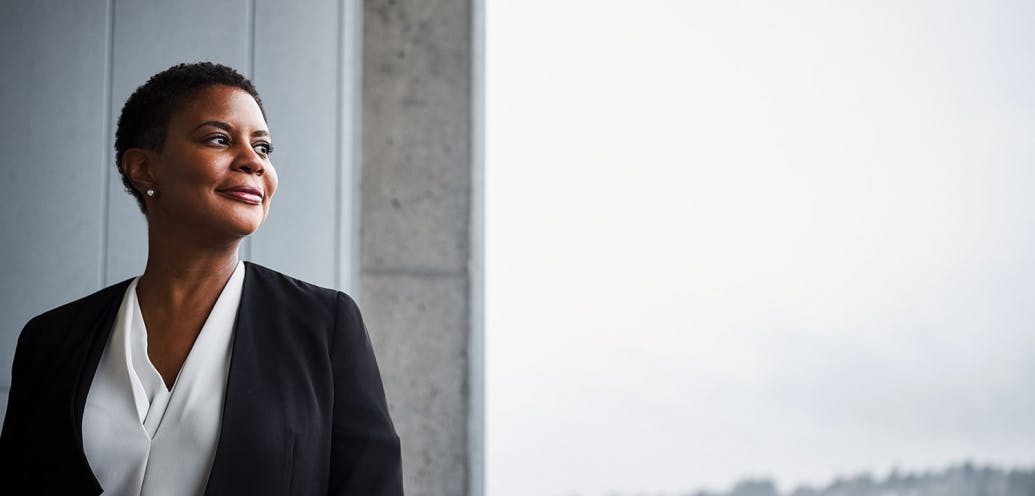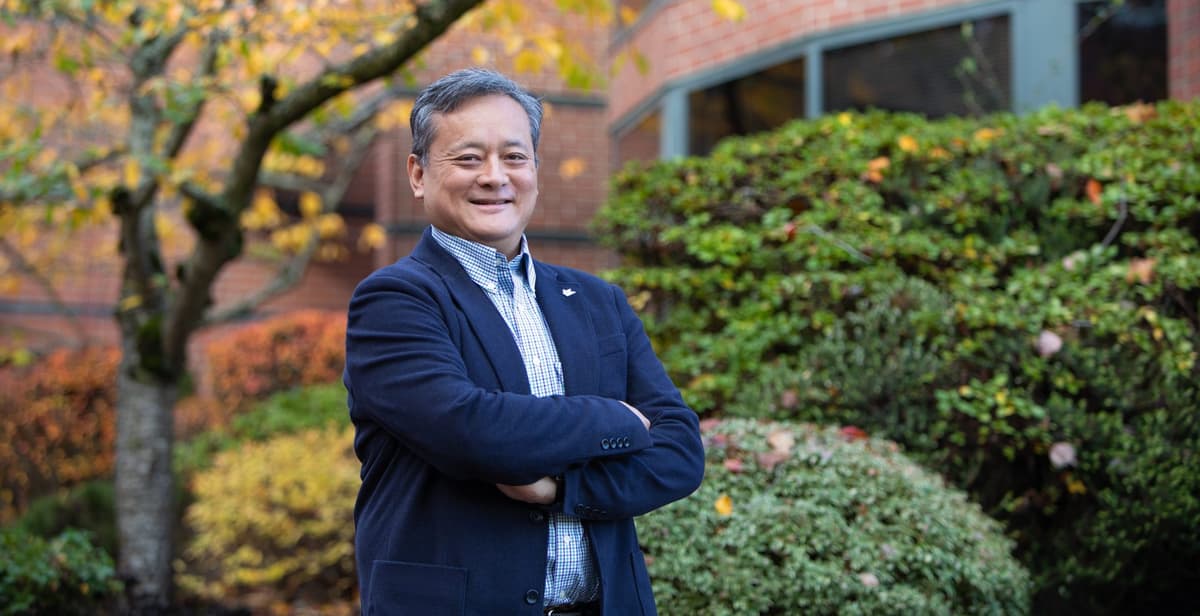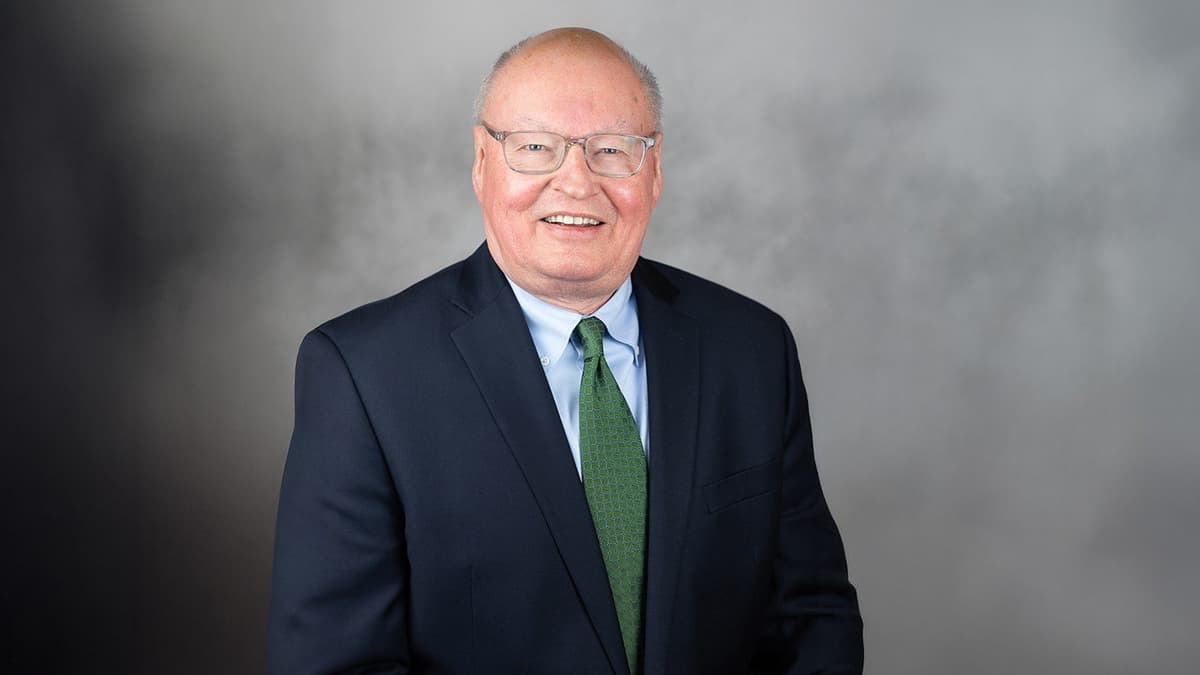The term “early adopter” might bring to mind people waiting in long lines to get their hands on the latest hot tech gadget. But Alondra Nelson wants to challenge that assumption a bit. Nelson, who is dean of social science and professor of sociology and gender studies at Columbia University, discovered some lesser-known groups of early adopters while doing research for her book The Social Life of DNA.
During her keynote address at Seattle Pacific University’s Day of Common Learning, Nelson recounted how African-American genealogists and genealogical societies, predominantly older citizens, came to be among the first to embrace direct-to-consumer genetic testing. Testing companies such as African Ancestry and 23andMe promise information about a customer’s family heritage. What Nelson discovered in her research, was that people came to those tests with far more questions and hopes that a simple test could answer. By following the lives of individuals who took the tests, and asking questions about their experiences after they’d had time to reflect on the meaning of their test results, she tells stories about their hopes for reconciliation, healing, reparations, and recovering an identity that had been stolen through the slave trade.
An interdisciplinary social scientist, Nelson writes about the intersections of science, medicine, and inequality. Nelson is the author, most recently, of The Social Life of DNA: Race, Reparations, and Reconciliation after the Genome. Her books also include the award-winning Body and Soul: The Black Panther Party and the Fight against Medical Discrimination and, as co-editor, Genetics and the Unsettled Past: The Collision of DNA, Race, and History, and Technicolor: Race, Technology, and Everyday Life. Chair-elect of the Science, Knowledge and Technology Section of the American Sociological Association, she has seen her essays, reviews, and commentary appear in the New York Times, The Washington Post, Science, The Boston Globe, and National Public Radio.
She spoke with Max Hunter, assistant professor of biology and director of the Pre-Professional Health Sciences program at Seattle Pacific University. Here are some edited excerpts from their conversation.
Hunter: Let’s begin with Body and Soul. In Seattle we have health clinics that were started by Black Panthers, like Carolyn Downs’ clinic. What did you discover about health clinics in Seattle in particular?
Nelson: The project really started as an archival project. I’m a historian, but I also do ethnographic research, and I couldn’t keep my ethnographic muscle from twitching. For me, finding the Carolyn Downs Clinic and understanding this network of clinics actually occurred when I was here in the archives doing the research. I found addresses of former Panther headquarters or former clinics.
I just got a map, and I drove and walked around these neighborhoods to try to get a sense of where the high school was that the Dixon brothers went to in relation to where the clinic would’ve been. It was in the course of that kind of walking around that I came to discover the Carolyn Downs Clinic.
I think the community clinics tell us is that health is not only about literally the ideology of a particular disease and finding out what that is and fixing it, but it’s also about people living in whatever they call kin or family or community.
We are one of the wealthiest countries that the world has ever known, and so we have lots of privileges and one of the privileges that we, I think, should embrace is that healthfulness or healthiness is not just absence of disease. It’s a robust, full life and communities are really central to that.

in Royal Brougham Pavilion. Photo by Garland Cary
So how did that work for the Black Panthers?
What I think is so interesting is how innovative and pioneering the Black Panthers were in thinking about health. People don’t have to be on the full bandwagon with what the Panthers did to see this. So much of that is encapsulated in when they revised Point 6 of their 10-point platform in 1972.
Point 6 is a demand almost for universal health care, because it was for all black people, which for them was a wide swath of people. All oppressed people for them would’ve been anybody, sort of, because they were radical left. Anybody oppressed by capitalism.
It’s effectively a call for universal health care. But where it goes further is that it’s not just saying in what might be a sort of simplistic, socialistic frame, give everybody health care, and give us money and give us health care. It’s actually a demand to be involved in the very creation of medical knowledge and how we think about what healthy is, and what medicine and good medicine is, and, by extension, a good society.
It is very interesting how part of that point says “We believe that mass health education and research programs must be developed to get all black and oppressed people access to advanced scientific and medical information so we may provide ourselves with proper medical attention and care.” It was actually a movement away from dependence to autonomy. Can you talk about the ideological and historical origins of this impulse?
Absolutely. I think there are two answers that I try to lay out in the book. It was the case that the Black Panthers health activism was taking place in the context of a radical health movement. The Berkeley Free Clinic, the Haight-Ashbury Free Clinic, the feminist clinics that brought the Boston Women’s Health Collective that would create the publication Our Bodies Ourselves, which is now still in print. There was a zeitgeist there that they were plugged into.
But there was also a long and grim and deep history of the exclusion of black people from medicine, of neglect and abuse. This is part of what I try to trace in the book. It goes back a little bit to racial slavery in the United States, but more immediately to the decade before the Black Panthers.
We don’t talk about the fact that the civil rights movement was certainly about segregated lunch counters, segregated schools, but we also at this time had segregated hospital wards. In Atlanta you had Grady Hospital, which literally built with federal money two hospital towers that were identical, but one was for black people and one was for white. Grady is very important, and now a world-class medical center and has always been very important for medical research and the delivery of medical services. But just the illogic of that boggles the mind — and the expense of it and the use of federal dollars to do it moreover.
Jim Crow also affected medical schools, and who could go to medical school and nursing school, who could work in any of the health care professions. It affected whether or not you could get permission to see your patients at a certain facility.

It relates to the origins of the National Medical Association and the activism of black nurses in New York following the Harlem riot of 1935. Because black physicians couldn’t even belong to the American Medical Association.
Exactly. Also black physicians and intellectuals and scholars were often leaders in the NAACP and a lot of the African-American civic and civil rights organizations. You had figures like W.E.B. DuBois who was an important sociologist, but part of his work was also a radical critique of scientific racism. Early in his career he tried to use the tools of the scientific social sciences and science itself to come up with an anti-racist kind of lens for thinking about the world.
Or you had people like Montague Cobb, who was one of the first American physical anthropologists it was at Howard University and used to write a column called “The Integration Battlefront” for the NAACP newspaper The Crisis, in which he was railing against scientific racism in his writings.
How did the Black Panthers use health care and human-subject research concerns to re-articulate the struggle for black liberation?
The phrase I use is that the Panthers were at the same time waging sort of two struggles. One was against the ways in which black communities were underserved by mainstream medicine and the other was a challenge to the ways that poor and oppressed communities were overexposed to the worst harms of medicine. This gets to the human-subject research piece.
They were fighting on these two fronts and so that’s what makes it to me particularly rich and interesting. It would’ve been laudable to just say, give health care to black people. That was great, but they understood that it was a system. That the devaluation of black communities and black bodies that was often conveyed and expressed in practice and human subject research, both human subject research that was above board and that was secreted away, had everything to do with the ways in which black people were excluded from mainstream medicine. There was a larger calculus of devaluation of black life and of black bodies that they were keyed into on these two different levels.
There’s a famous photograph of 1967, October, Huey Newton, one of the Black Panther co-founders who was involved in a police shooting in which a police officer was killed. He was arrested and put on trial and I think he was indicted, but ultimately released, or he was ultimately not convicted of the murder of this police officer. Another police officer is shot and he is shot. There is a photograph of him shackled to a gurney in Highland Hospital in Oakland and there is a nurse standing next to him and a police officer standing next to him. That photograph I think really summarizes the ability of institutions to make live and let die and the particular vulnerability for black people to be right in the middle and that the pendulum could sort of tip either way at any moment.
We’re seeing that today.
You know, just the sense that there are some communities who sort of have to take a second glance at a police officer. They can’t always say, “This person is here to help me and this is the person I can go to and trust and know that out of this encounter will come the best possibility for me.”
I think you and I, as African Americans, were probably raised with some of that, but it feels different to me in a really unfortunate way. My parents would say don’t trust strangers, don’t talk to strangers — those sorts of things. But my parents, in raising me and my sister and my two brothers in San Diego, never said to us don’t trust police officers. Never.
But I think to be a parent of color today you would be irresponsible not to at least say think twice.
Going back to The Social Life of DNA, you start out with Roots. I remember that when it came out. It was probably one of the last times, because of all the different ways that we use media now, that the entire family would sit together for a week to watch a show. But then you also talk about how it became apparent early on that you would be sort of the kinkeeper for your family. Can you talk about that a little?
In the social-work literature I discovered a term that they use called “kinkeeper” and it usually refers to the person in your family, and we all have at least one, who you can call, or write to, and catch up on everybody. It’s usually a gendered role, so it’s usually a woman that you can call, and in 10 minutes they’ve told you everything that’s going on with all your cousins.
I came to really think about that practice. As a sociologist, I wanted to ask, why do people do genealogy, and I think to some people it seems like an obvious question. They want to find out about their families. But as scholars, we know it’s more than that. It does something for us in the world.
I think Roots helps to answer that question because on one hand it was a story about a family’s genealogy. But on the other hand, it’s a book and a television miniseries that’s called an American saga. It’s making claims about an individual story that’s also this bigger story about the United States.
In the case of the Havasupai tribe, knowledge generated by the human genome appeared to contradict their narrative of who they were and how they ended up in the Grand Canyon. It seems like these tests have the potential to undermine notions of identity — for individuals or groups. What do you think about that?
I’ve thought about that a lot. In the book, I look at what people do with the test results beyond the moment where they get the results.
Sometimes people think these findings are very interesting and efficacious, and sometimes they think, oh, that’s interesting and shrug their shoulders and move on. The social science truism from psychology to sociology is that identity is both what people say their identity is and how it’s described from the outside.
We are still working with that dynamic whether or not your DNA test says that you look like me and I’m 99 percent European. So to think that identity is only a scientific fact, whether or not it’s in relationship to the state or relationship to one’s in their community, is the most anemic way.
I’m not willing to cede to science the truth of identity, because identity is rich – it’s cultural, it’s political, it’s social, and maybe now it’s also biological too, but one of those things is not more powerful in the lived experience of people than the other.
What I think is far more important with the Havasupai case is that their genetic information was used deceptively. They gave permission for certain research, but other research additionally was done — research that pushed ethnic and racial stereotypes about the community.
You touch on scientific racism a little bit, and that’s something I’m really interested in. We’ve been asked about the relationship between being able to understand human beings at this level and the idea that race is a social construct, and what we now know through the mapping out of the human genome. Is it safe to say that race is a social construct?
Yes!
The beauty and wonder of 21st century genetics brings to us is, I think, an opportunity and a clear example of how genetics becomes part of the social construction. We are at a place beyond the two cultures divide in the world. Many social scientists tried to say that science and politics are separate. Race is a social construction. But part of what they were doing was highlighting the ways in which ideas about science and race were actually part of the social construction.
One could take a perspective that molecular genetics, molecular biology is a social practice. It is a practice that has verifiability. You can refute it or not refute it. Someone can reproduce the experiment or not reproduce the experiment. That’s the gold standard of science. The scientific method is important and laudable.
But it’s also the case that the people who carry out those methods, and the people who form questions about certain methods or make decisions about how to engage certain methods and not others are social creatures who live in communities and have political positions and have ideological positions. They have their own subjectivities. It’s not to say that scientists can’t be objective, but we are creatures that exist in context.
So what do you mean by the social power and social life of DNA?
For me, the social power is that, for good or for ill, we think that DNA tells us something more than other forms of records or storytelling, such as historical and archival records. As a modern, 21st-century, techno-scientific society, we think that science is very important and might be more important than other ways of knowing about the world.
I don’t think that’s a good thing, but I think that it’s a truism. That’s how our society is oriented right now. The social life of DNA for me is thinking about, for the very first time, the sort of complexity and ubiquity of genetic analysis in the world.
Scientific racism still exists. Genetic determinism still exists, but our earlier stories about this were very top-down. Sometimes people with bad intentions at other times engaging in scientific research or claims making that was essentially racist either by design or by outcome.
Today you have people opting in, participating, and being engaged in direct to consumer genetic research.




